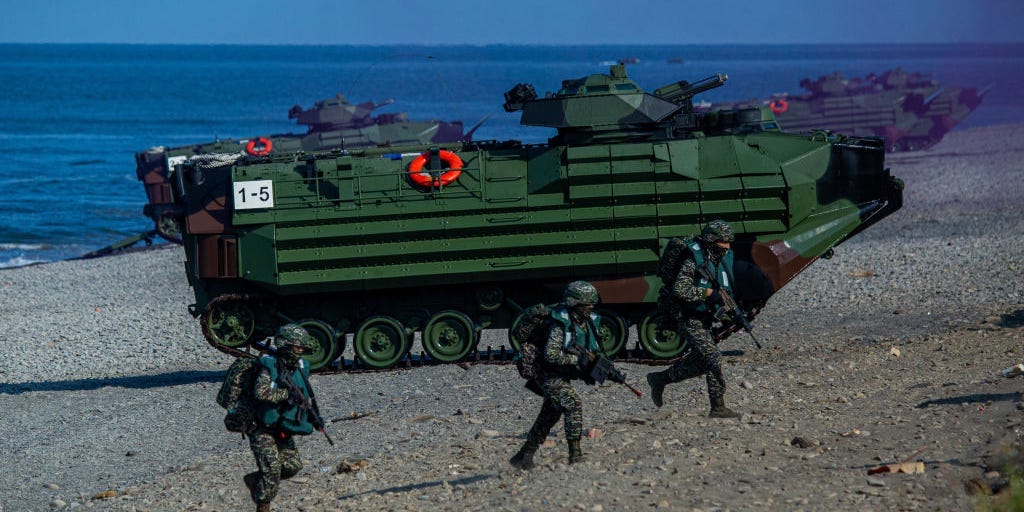- Taiwan just wrapped up its largest annual military exercise simulating an attack by Chinese forces.
- The Han Kuang exercises help ready not only the armed forces, but also Taiwan's civilian population.
- Experts say this year the exercise was more focused on "survivability" than in the past.
Taiwan just recently wrapped up its largest annual military exercise aimed at preparing the island for a potential Chinese offensive as tensions rise once again, and experts told Insider this year's drills appeared more focused on 'survivability' than they have in the past.
Greater emphasis is being placed on Taiwan's Han Kuang exercise, which ended last Friday, amid growing concerns that China could choose to use force against the self-governing island democracy Beijing perceives as an inseparable part of China's territory.
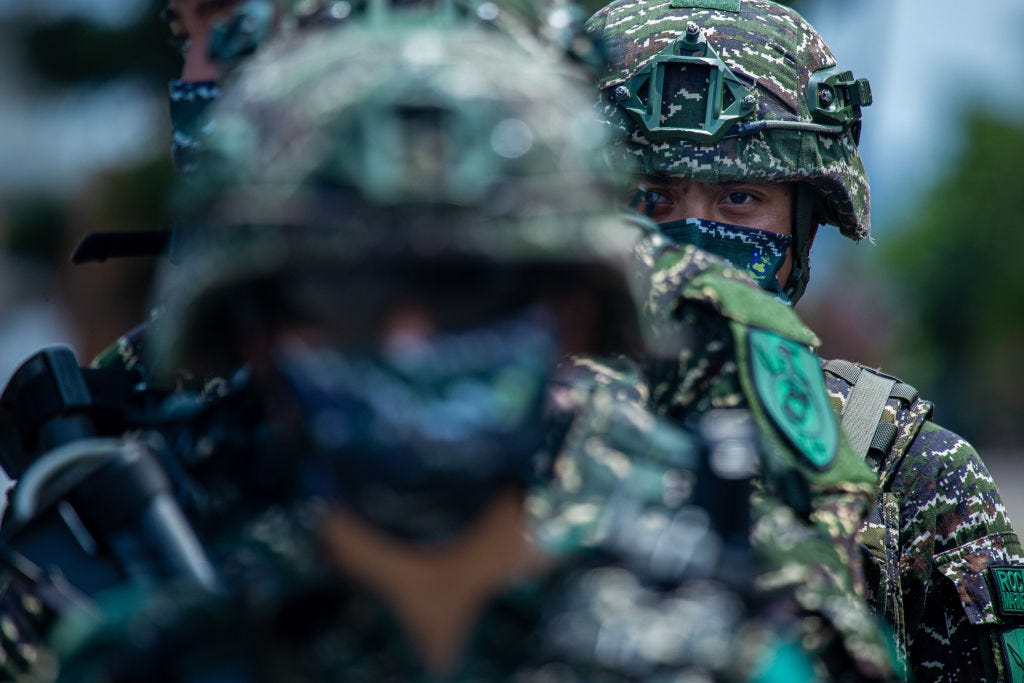
China regularly conducts military exercises near Taiwan and sends military aircraft into its air defense zone, and these have become increasingly provocative. Last October, for example, Taiwan scrambled aircraft in response to 56 Chinese warplanes entering Taiwan's air defense identification zone in a single day.
And this week, as House Speaker Nancy Pelosi visited Taiwan amid repeated threats and warnings from China, multiple large groups consisting of about four dozen Chinese warplanes in total flew through the island's ADIZ, with some Chinese military aircraft crossing the median line. China will also be conducting live-fire exercises all around Taiwan this week.
Facing these challenges and others from China, which has not taken force off the table as an option for achieving its unification goals, Taiwan has been forced to think carefully about how it would defend itself.
The Han Kuang exercise is Taiwan's largest annual military drill, with a command post exercise taking place in the spring followed by live-fire exercises in the late summer.
During the drills last week, Taiwan's President Tsai Ing-Wen told troops that the exercise demonstrates "the ability and determination of our military in defending our country," CNN reported.
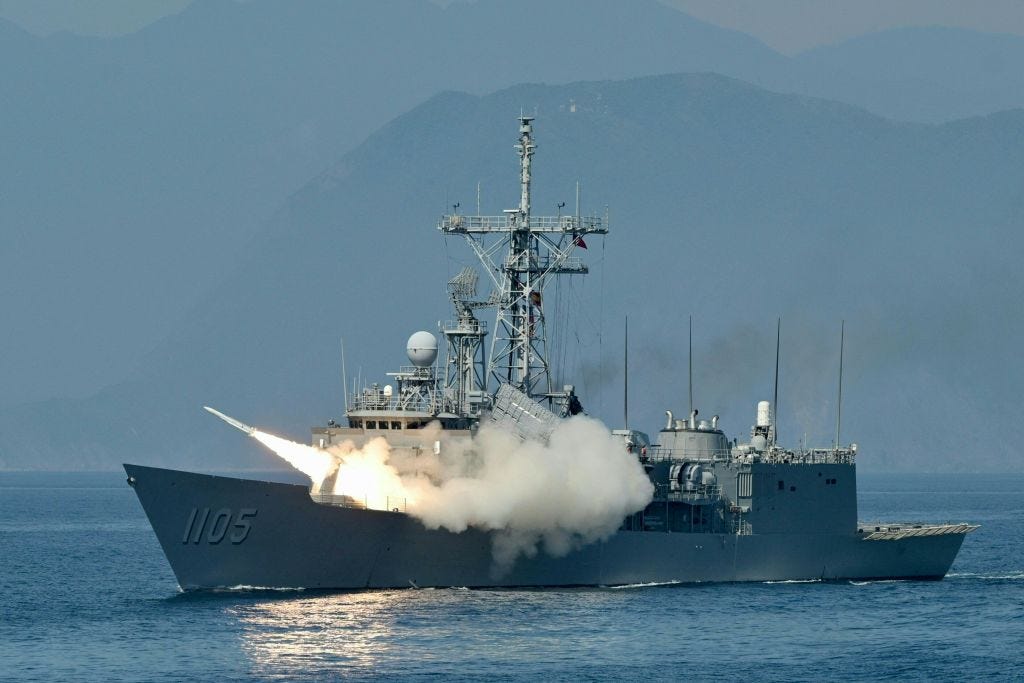
Mark Cozad, acting associate director of the International Security and Defense Policy Center at the Rand Corporation, told Insider that the aim of the Han Kuang exercise can be broken into two parts: readying Taiwan for an attack and its immediate aftermath and blunting a Chinese assault so Taiwan can prepare for further fighting.
In the event of a Chinese attack, Taiwan would likely move quickly to disperse its aircraft and other strategic assets, moving them to potentially less vulnerable underground facilities, as ground combat units and guided-missile systems fire on and attempt to repel incoming enemies at key waterways and ports.
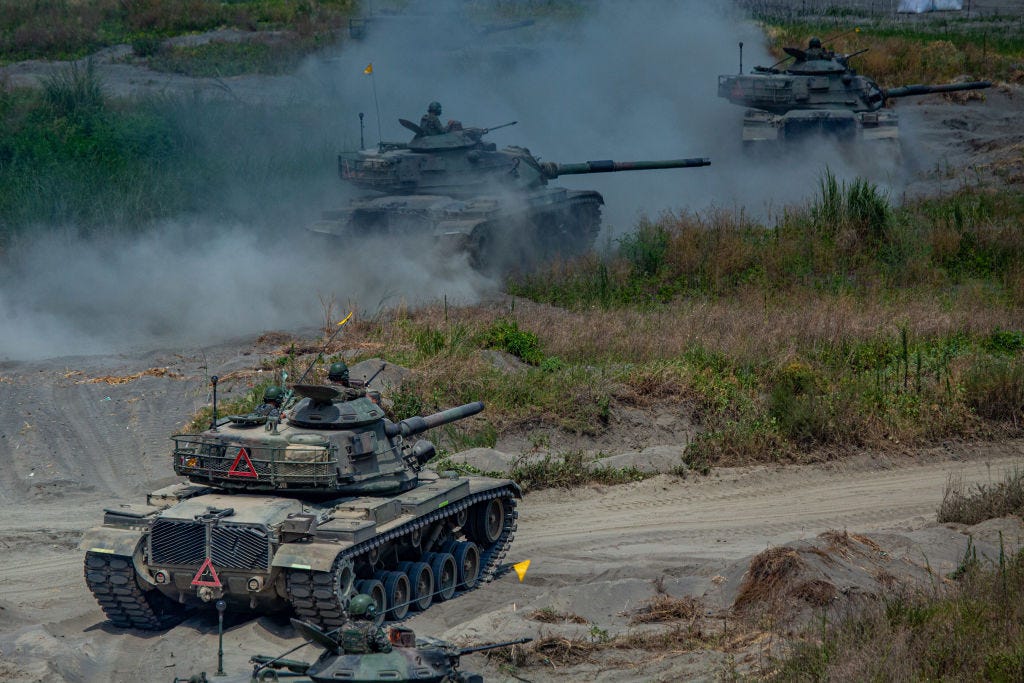
In addition to images of Taiwan's troops training on various firearms and in tanks and other vehicles, photos from the recent exercises shared on Facebook by Taiwan's Air Force, also known as the Republic of China Air Force, showed fortified underground cave-like structures connected to its Chiashan Air Force Base.
In a rare set of photos from one of these underground facilities, members of the ROCAF 5th Tactical Composite Wing could be seen conducting a drill reloading and readying a US-made F-16 Viper for operations, The War Zone noted recently.
Cozad explained that this year, it seemed the Han Kuang exercise had a greater focus on preparing its civilian population for a potential military attack.
"They're focused on ensuring the streets are cleared, that sirens are listened to, they're dropping leaflets meant to improve morale" Cozad said. "Because it's critical in wartime that your civilian population stays with you. This is much more than a combat exercise."
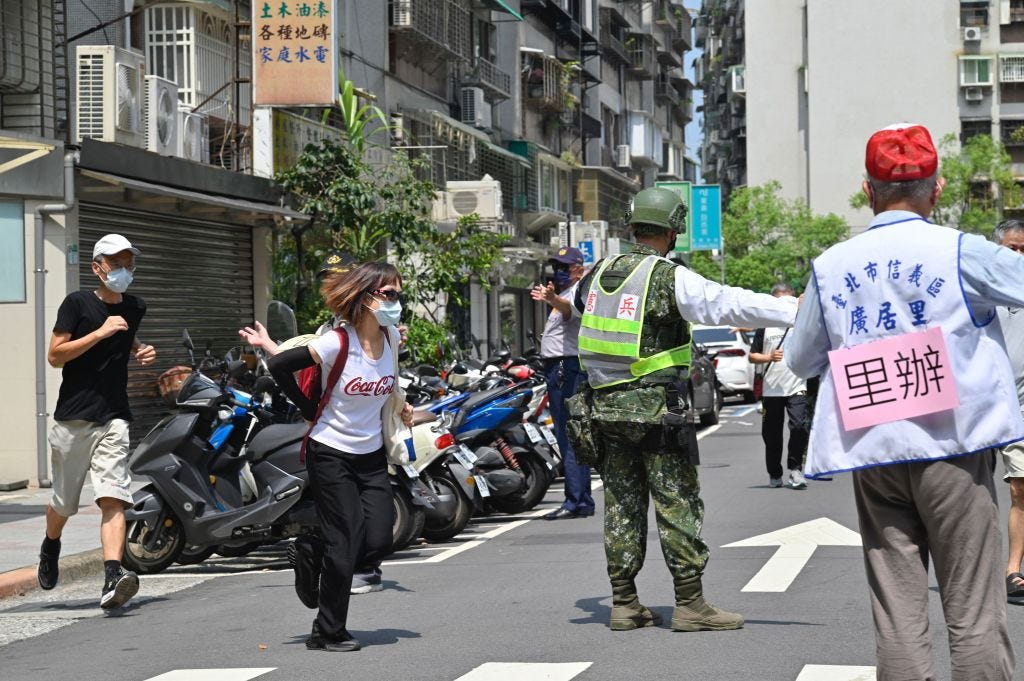
This year, many people in Taiwan have been taking "civil defense" training classes with groups like Forward Alliance, a Taiwan-based national security and defense think tank.
The classes are taught by first responders — such as medics and firefighters — who instruct participants in basic first aid, on how to properly dress a wound or how to rescue a person trapped under debris; however, the classes do not offer military training, as some groups in Ukraine did before the Russians invaded in late February.
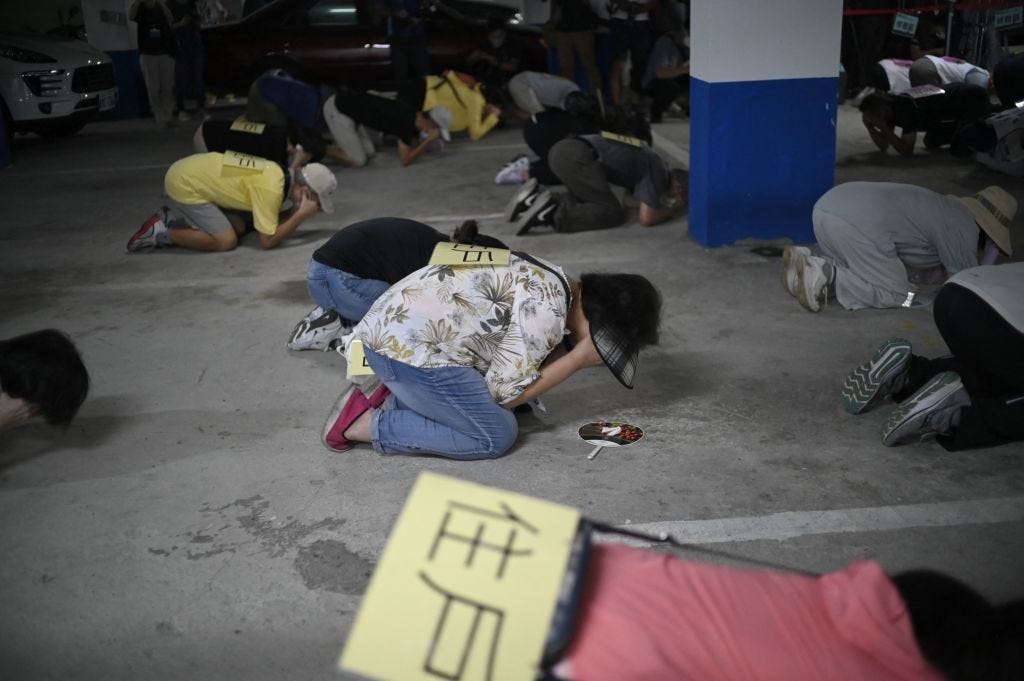
Cozad said that the civil defense portion of the Han Kuang exercise may be more pronounced this year because of the war in Ukraine, not only because of the importance of training for civilians, but because Taiwan may now be realizing the critical importance of its military reservists for the defense of Taiwan.
"On paper, Taiwan's reserve force looks impressive," Cozad said. "But the quality of readiness of those soldiers is going to be incredibly varied."
Taiwan has an active-duty force of around 180,000 troops — a figure dwarfed by China's 2-million-strong People's Liberation Army, but its reserve force is estimated at around 1.5 million, according to a 2022 report from the Global Firepower index.
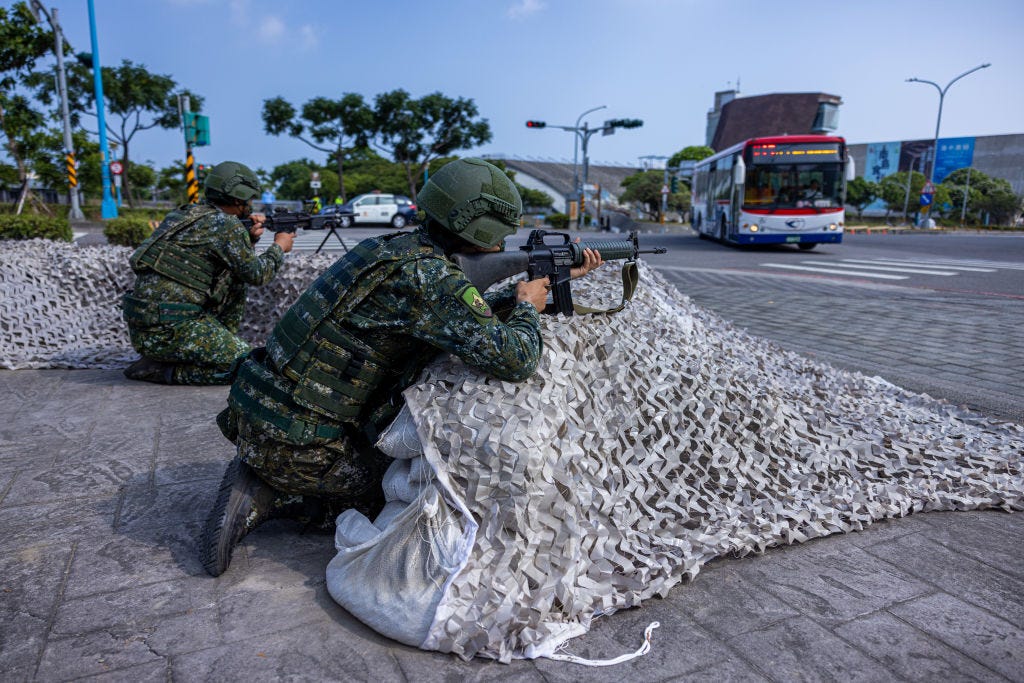
Cozad said another more recent area of focus for Taiwan's military is the idea of being a more mobile force. He explained that in the past, their military hasn't had high mobility systems and have instead been focused on big ticket items like the upgrades to the F-16s.
"Watching Ukraine has moved the needle in part because of things like mobility," Cozad said. "They hadn't been trained as much to be a mobile force, but now they're actually moving their systems around during these exercises."
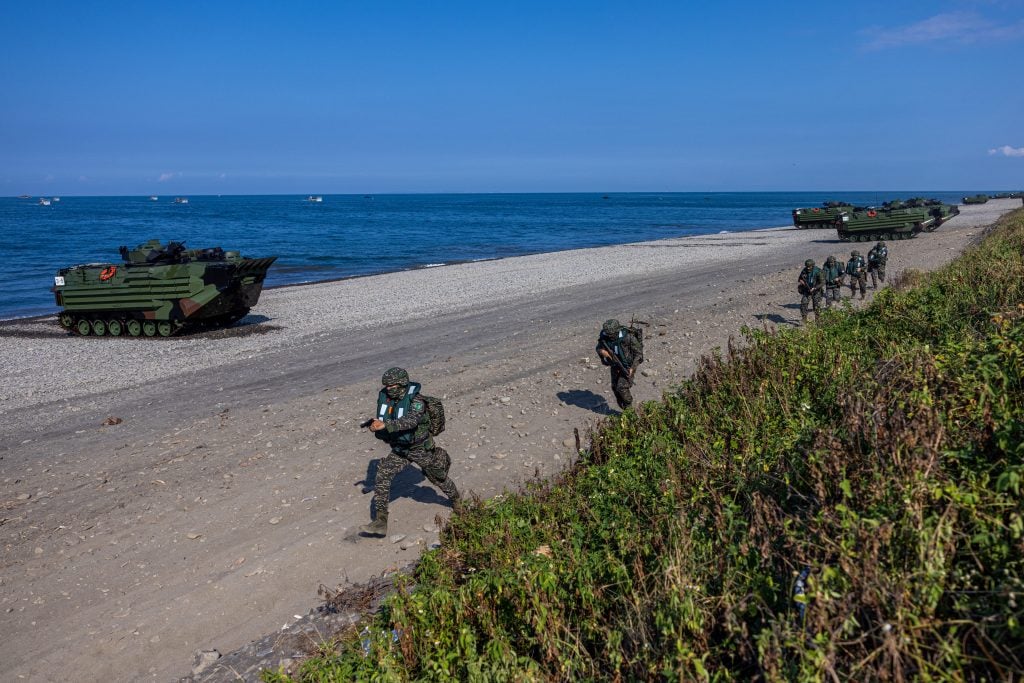
But while Taiwan is bracing for the worst, the world may still be years away from the possibility of military action by China against Taiwan, David Ochmanek, a senior defense researcher at RAND, told Insider. "We're not days or weeks away, but years down the line," he said.
That said, US military officials have suggested this is a very real potential future development. The head of Indo-Pacific Command, Adm. John Aquilino, said earlier this year the situation in Ukraine should be wake-up call for US officials concerned about China's designs on Taiwan.
"We have to look at this and say, 'Hey, this could happen,'" Aquilino said, adding that China "is the most consequential strategic competitor that the United States has faced."
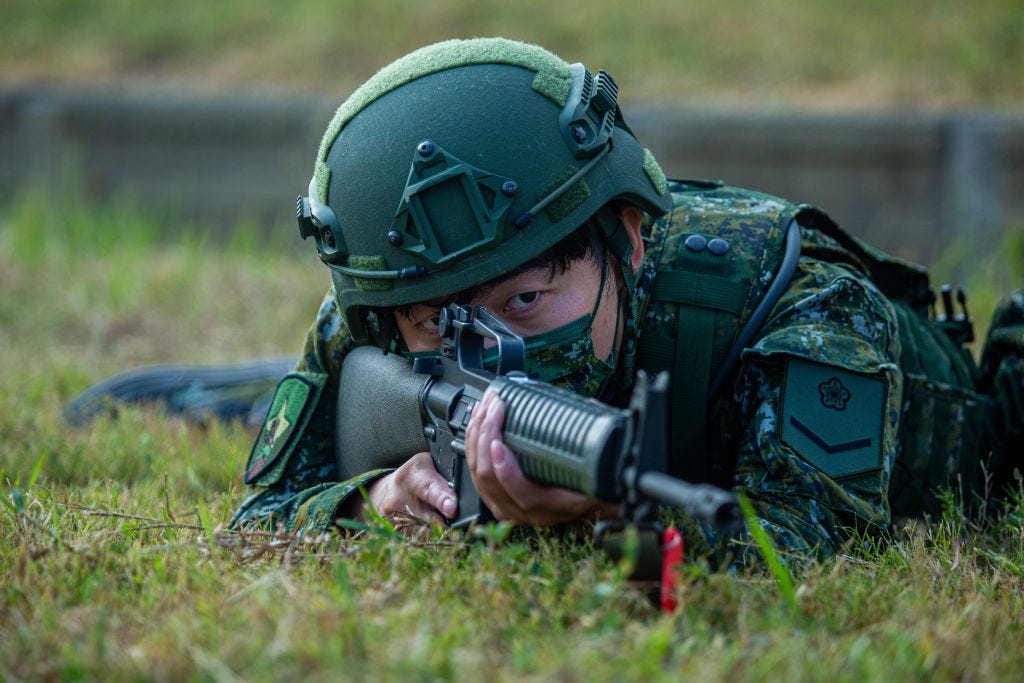
Among experts and officials, there is some disagreement on how a Chinese invasion of Taiwan might go. A 2021 Pentagon report on the People's Republic of China said that "an attempt to invade Taiwan would likely strain PRC's armed forces and invite international intervention."
"These stresses combined with the PRC's combat force attrition and the complexity of urban warfare and counterinsurgency, even assuming a successful landing and breakout, make on amphibious invasion of Taiwan a significant political and military risk," the report said.
In Taiwan, though, officials say China is much closer to being able to mount a "full-scale" invasion. Taiwanese Defense Minister Chiu Kuo-Cheng has said previously that China could be ready for such an invasion by 2025, adding that he believes military tensions in the Taiwan Strait are at their "most serious" in more than 40 years.
